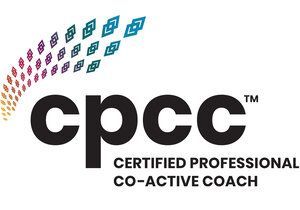Hope & Healing Trauma: A Gentle Path Back to Wholeness

Trauma can feel like a fracture - a sudden break in the rhythm of life. It lingers not only in our memories, but also in our bodies, our nervous systems, and the quiet ways we hold ourselves back. At first, healing can feel impossible. Hope can feel far away.
And yet, again and again, I’ve witnessed that hope has a way of returning, sometimes softly, sometimes like the first crack of light after a long night. Healing from trauma is not about erasing the past, but about learning to carry it differently.
It’s about reclaiming safety, connection, and trust in ourselves, one step at a time.
When Trauma Stirs Old Wounds
Often, what makes trauma feel so heavy is not only the event itself, but the way it awakens older wounds beneath the surface — fears of rejection, abandonment, or not being enough. These layers of pain can leave us feeling raw, isolated, and unsure of who we are without the identities or roles we once clung to.
I remember this in my own journey. When life shifted suddenly and a physical skin illness pulled me away from the familiar roles and anchors of career and identity, it felt like everything I had built myself upon crumbled. On the surface, it may have looked like “just” a physical setback, but beneath it stirred deeper fears I had carried for years — the fear that without my achievements or image, I would not be enough.
Like many people, I had learned to protect myself through identities: the achiever, the perfectionist, the one who blends in. These strategies helped me survive, but they also muted the most authentic parts of me.
And yet, in the collapse of those identities, something unexpected happened: what felt like an ending became the beginning of something deeper.
It wasn’t only a trauma healing journey — it became a path of rediscovery of myself.
The Role of Hope
Hope rarely arrives in dramatic ways. More often, it appears in small, almost ordinary moments.
For me, it came in glimmers:
- Sitting quietly and realizing I could breathe again.
- Starting a small creative project during one of the darkest seasons of my life, just to make sense of what I was going through.
- Discovering the simple joy of being in nature, or feeling my body soften in therapy when I felt truly seen.
- The gentle presence of my therapist, who reminded me that I wasn’t broken.
These moments didn’t erase the pain, but they reminded me that maybe things didn’t have to stay that way forever. Hope didn’t come as a single breakthrough; it came as tiny openings, each one widening my capacity to see possibility.
And this is often how hope works. It doesn’t always arrive as a grand transformation, but as soft reminders that healing is possible. Step by step, we begin to reclaim the parts of ourselves that have been muted — the playful child who wanted to create, the intuitive self who sensed more than what could be “proven”, the tender parts of me that longs for connection without performance or perfection.
What looks like collapse may, in truth, be initiation — a cracking open that makes space for authenticity.
What Helps Us Heal
Through my lived experience and my work as a psychotherapist, I’ve learned that healing is both universal and deeply personal.
- Safety comes first. Healing happens when there is enough safety — with ourselves, with others, or in a therapeutic space.
- The body remembers. Trauma imprints itself into the nervous system, which may keep responding as if the danger is still present. Healing means teaching the body it is safe again, so we can reconnect with who we truly are.
- Connection heals. True healing often comes when we allow ourselves to be seen, not hidden.
- Self-trust grows slowly. Over time, we can learn to trust our inner wisdom — discovering that love, acceptance, and authenticity flow naturally from it.
Hope as a Practice
Healing trauma doesn’t mean forgetting the past. It means weaving it into the tapestry of who we are — not as the whole story, but as one chapter.
For me, hope has become a practice of unmuting — expressing myself more fully, even when it feels scary. It’s about remembering that being seen isn’t dangerous. It’s deeply healing.
Hope whispers that our story isn’t finished. That we are more than what happened to us. That the same energy once used to survive can also be used to create, to love, and to thrive.
Even on hard days, hope reminds us:
you are not broken — you are becoming.










